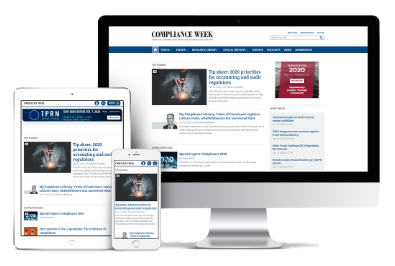Many small organizations within the Defense Industrial Base (DIB) are struggling to meet the rigorous requirements validated through the Cybersecurity Maturity Model Certification (CMMC). If you haven’t been tracking it closely, CMMC was finalized as a rule in October 2024, with an effective date of December 16, 2024.

About the author
Thomas Graham is the vice president and chief information security officer at Redspin, a Cybersecurity Maturity Model Certification service provider. He is a recognized expert in CMMC and holds multiple certifications, including Certified Assessor and CMMC Certified Professional. With a doctorate in Information Assurance and Security from Capella University, he oversees internal security matters at Redspin.
In short, the rule states that in the near future all Department of Defense (DoD) contractors, regardless of size, must demonstrate compliance with the appropriate level of CMMC:
- Level 1: Self-attestation to 17 basic cybersecurity practices
- Level 2: Either self-attest, or third-party certification to 110 practices, depending on the contract
- Level 3: Mandatory third-party assessment by the Defense Contract Management Agency and its Defense Industrial Base Cybersecurity Assessment Center.
Once the related 48 CFR rule (the rule outlining CMMC requirements in contracts) is finalized, every DoD contract will, over a three-year period, require CMMC proof before award. That means: no certification, no contract.
For many small teams, especially those required to certify at Level 2, this can feel overwhelming. While the requirements aren’t new, validating them is, and that’s where the pressure is mounting.
The stakes are real
Noncompliance can have serious financial consequences. Most are familiar with the Department of Justice’s actions against major entities like Boeing and Georgia Tech, but smaller organizations aren’t immune. Health Net Federal Services, a California-based Defense Health Agency contractor, was fined more than $11 million, partially for ignoring advice from third-party auditors. While MORSE Corp paid $4.6 million for failing to meet cybersecurity requirements tied to Army and Air Force contracts.
How small teams can succeed
The good news: small teams can succeed without growing their staff or overextending their budget. The key is to focus on smart strategies, lean on scalable cloud technologies, and engage the right external expertise.
Cloud as a compliance force
Cloud platforms are an effective way to reduce your compliance burden and accelerate your CMMC journey. Solutions like Microsoft Azure Government Community Cloud (GCC or GCC High), PreVeil, and Google can help you meet CMMC requirements without needing to build and manage secure infrastructure in-house.
Here are five cloud-based steps small teams can take right now:
1. Clearly define your CUI scope
Identify where your Controlled Unclassified Information (CUI) and any additional sensitive data types reside, how it moves, and where it’s stored, processed, or transmitted in your environment. CUI mapping is critical for understanding which systems fall under CMMC requirements, and how cloud adoption can reduce your compliance scope.
2. Adopt a secure cloud environment
Migrate sensitive workloads to a cloud environment like Azure GCC-High. These platforms are built for the DIB and include pre-configured CMMC Level 2 compliance requirements. This approach reduces the scope and need for on-premises infrastructure and automates compliance with many baseline requirements.
3. Implement strong identity and access management
Ensure only authorized users can interact with CUI. Leverage the cloud’s built-in tools to enforce strong multi-factor authentication, role-based access control, and conditional access policies. Enabling Single Sign-On makes access management easier while keeping CUI secure.
4. Use virtual desktops for secure enclaves
Virtual Desktop Infrastructure, such as Azure Virtual Desktop, allows teams to work in secure environments when handling CUI. Properly configured, these solutions can remove endpoints like personal devices and local networks from your compliance boundary.
5. Partner with a managed compliance expert
Engage a CMMC-focused managed service provider or consultant. They can help design, configure, and maintain your cloud environment. These experts can streamline your compliance efforts, ensuring your cloud setup aligns with all 14 CMMC domains while addressing gaps in your existing infrastructure.
Additional CMMC Strategies for Small Teams (<5 People)
The cloud is just the beginning. Small teams should also consider these practical tactics:
- Prioritize high-impact controls: While all 110 controls are mandatory for Level 2, small teams should prioritize foundational practices like access control, configuration management, and incident response. These offer the most significant protection against common threats.
- Train your team: Invest in regular security awareness training for all employees to mitigate risks like phishing and accidental CUI exposure. Ensuring all admins have proper role-based training also allows for a well-trained team, one of the most cost-effective ways to enhance security.
- Conduct an honest gap assessment: Perform a thorough review of your existing security practices against CMMC requirements to include the objectives identified in the CMMC L2 Assessment Guide. A gap assessment will help identify critical holes and prioritize remediation efforts without wasting resources on unnecessary controls.
- Plan for continuous compliance: Certification is not a one-and-done event. Implement ongoing monitoring, logging, and auditing processes to maintain compliance and avoid costly setbacks during your next certification cycle.
Don’t wait, start now
CMMC isn’t optional. Whether you’re bidding as a prime or working as a subcontractor, certification may soon become the barrier between you and your next DoD award. Fortunately, with the right cloud tools, clear prioritization, and support from experts, even the smallest teams can confidently take on CMMC.
Start today by scoping your CUI, evaluating your current controls, and exploring scalable, cloud-based compliance strategies. Your next DoD contract could depend on it.











No comments yet